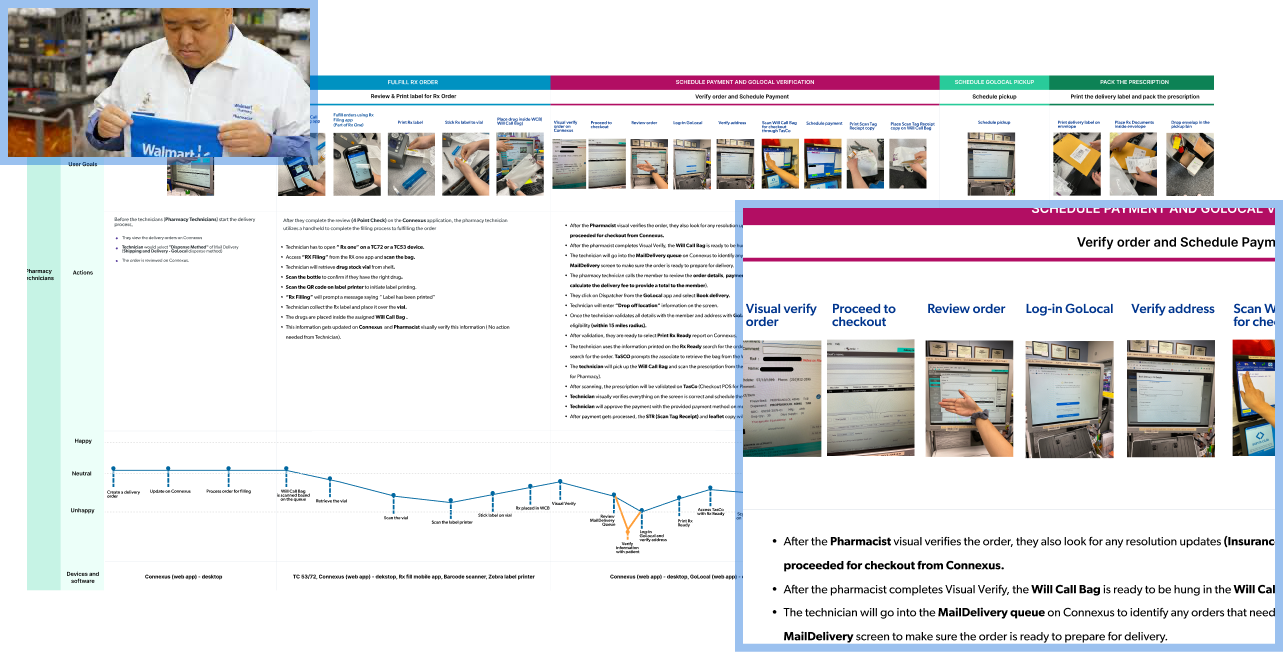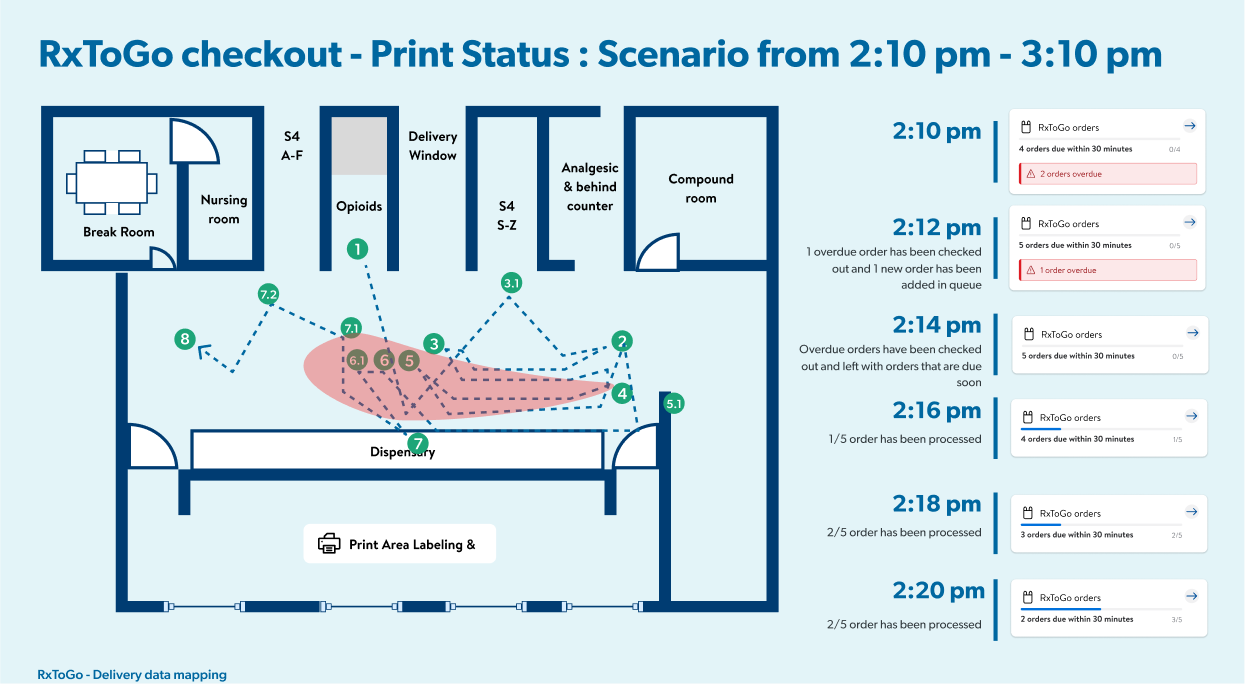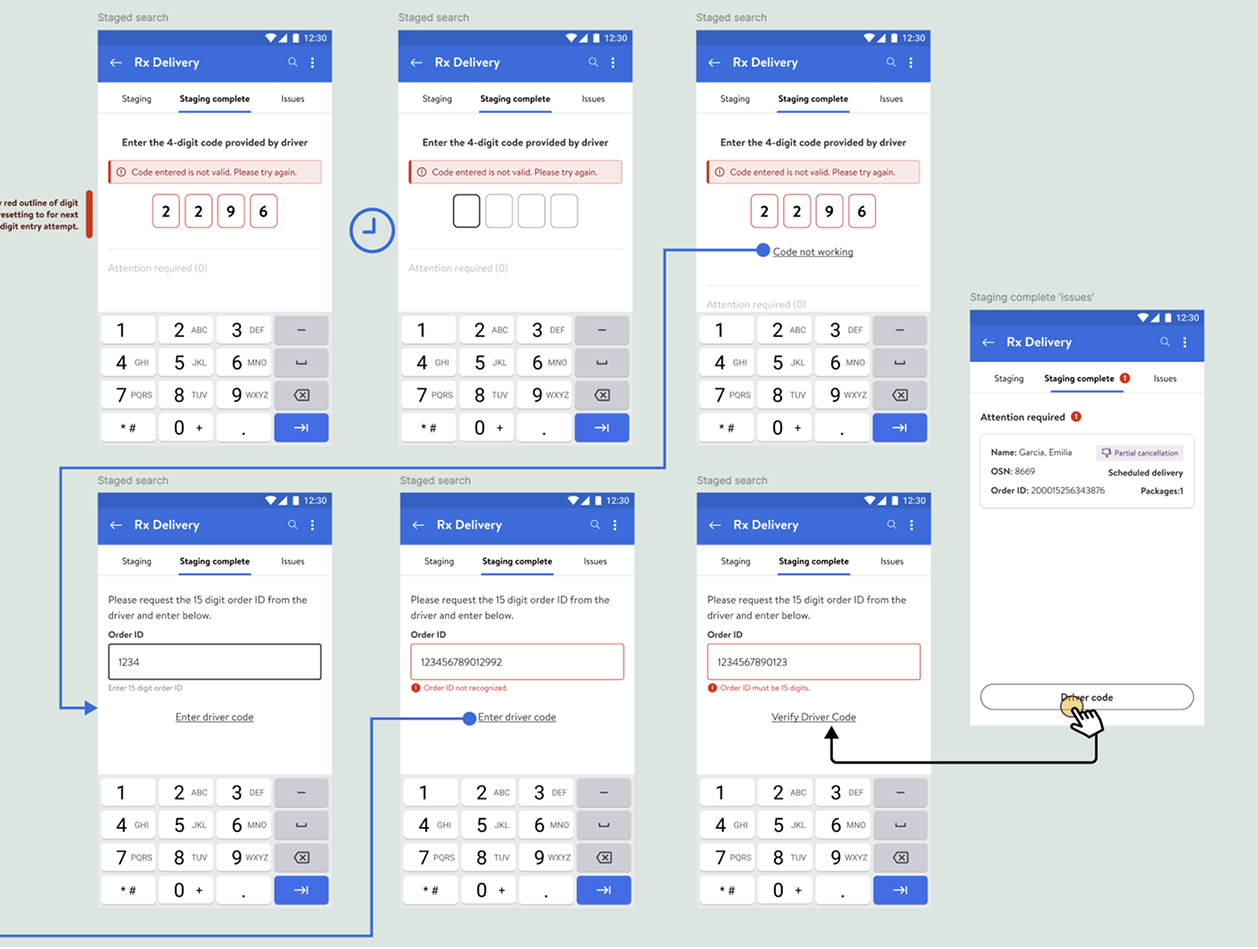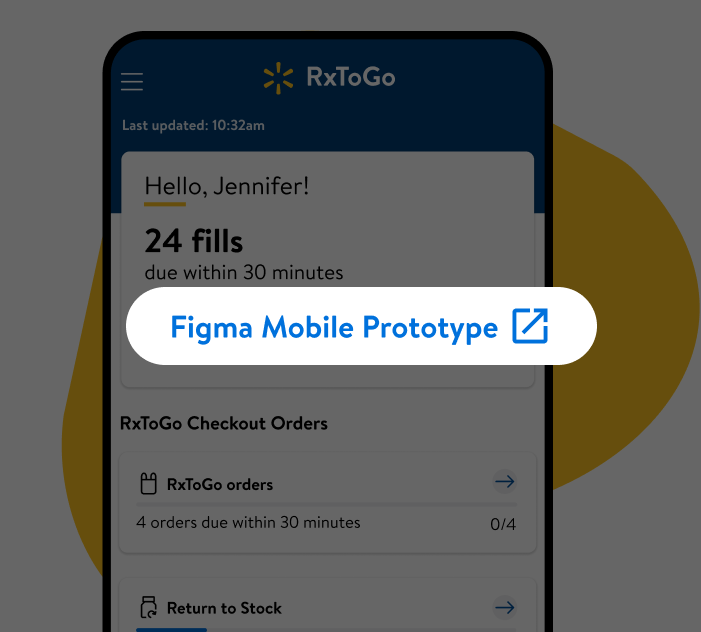
Pharmacy fulfillment, but faster.
Role: Principal Product Designer | Client: Walmart + Sam’s Club
Problem Statement
Pharmacy staff were spending too much time printing and bagging prescriptions. Redundant steps, unclear touchpoints, and inefficient routing meant wasted minutes—and miles—every day. It added up to slower service, fulfillment errors, and rising costs.
My Role & Solutions
As Principal Product Designer for Walmart and Sam’s Club, I led the redesign of the pharmacy fulfillment app. Collaborating with stakeholders and cross-functional teams, I delivered key solutions:
Research & Analysis: Identified gaps in workflows and refined technician insights.
Design & Prototyping: Redesigned task flows and user interfaces for improved efficiency.
Task Flow Optimization: Streamlined prescription processes, saving time per employee.
Development Handoff: Delivered clear documentation and ensured WCAG 2.1 and security compliance.
Low-Fidelity Prototype Sample
I redesigned the experience using the existing design system, creating low-fidelity prototypes for rapid stakeholder and user testing. This approach sped up decision-making, allowing for quick iteration and alignment with user needs and business goals.
Research and Analysis
I revisited and deepened my analysis of established research studies, identifying critical gaps in the existing data and workflow insights. By refining our understanding of technician challenges, I was able to drive more targeted improvements in the process, ensuring that the solutions we proposed were both actionable and impactful across the organization.

I didn’t guess—I watched.
Field analysis showed printing tasks took 3:14 and involved up to 105 steps per employee. I broke down time and motion data, reworking the workflow to reduce friction. We cut the process down to 2:52 and reduced the steps per employee to 73–91.
This saved 21 seconds per task—adding up to 1.5 hours per employee per year—and trimmed operational costs by 4%, resulting in ~$148K annual savings, just by streamlining a daily task.

Task Flow Optimization
I led the redesign of the app to identify and address workflow gaps, creating four user flows to streamline the prescription printing and delivery process. By removing duplicate tasks and optimizing the user journey, I ensured alignment with stakeholders and secured buy-in. This redesign saved 24 minutes daily or 2 hours weekly per worker by simplifying and reworking the app’s interface and task flow

Accessibility Standards Implementation & Design Handoff
I collaborated with the accessibility specialist on A11Y notifications for mobile, ensuring WCAG 2.1 compliance. Being part of the accessibility team allowed me to adopt best practices and contribute to a smooth development handoff, prioritizing usability for employees with adaptive needs.

Lesson Learned
- Small UX fixes scale fast
Optimizing micro-tasks saved hours and cut costs—proof that UX drives measurable impact. Watch users, don’t guess
Field studies revealed issues interviews didn’t—real behavior beats assumptions.Build access in from the start
Early focus on accessibility ensured compliance and improved usability for all.Sketch fast, fail faster
Low-fi prototyping sped up decisions and kept teams aligned early.
Outcome & Results
As the project lead, I drove significant operational improvements through research, design, and prototyping:
-
Research and field analysis revealed inefficiencies, saving 21 seconds per task, totaling 1.5 hours per employee annually.
-
By optimizing workflows and the interface, I cut operational costs by 4%, resulting in $148K in annual savingsfor the company.
-
My design reduced prescription fulfillment time by 24 minutes daily per worker, boosting efficiency and accuracy.
-
I also ensured WCAG 2.1 compliance, improving accessibility for employees with adaptive needs.
Full use case available upon request.

